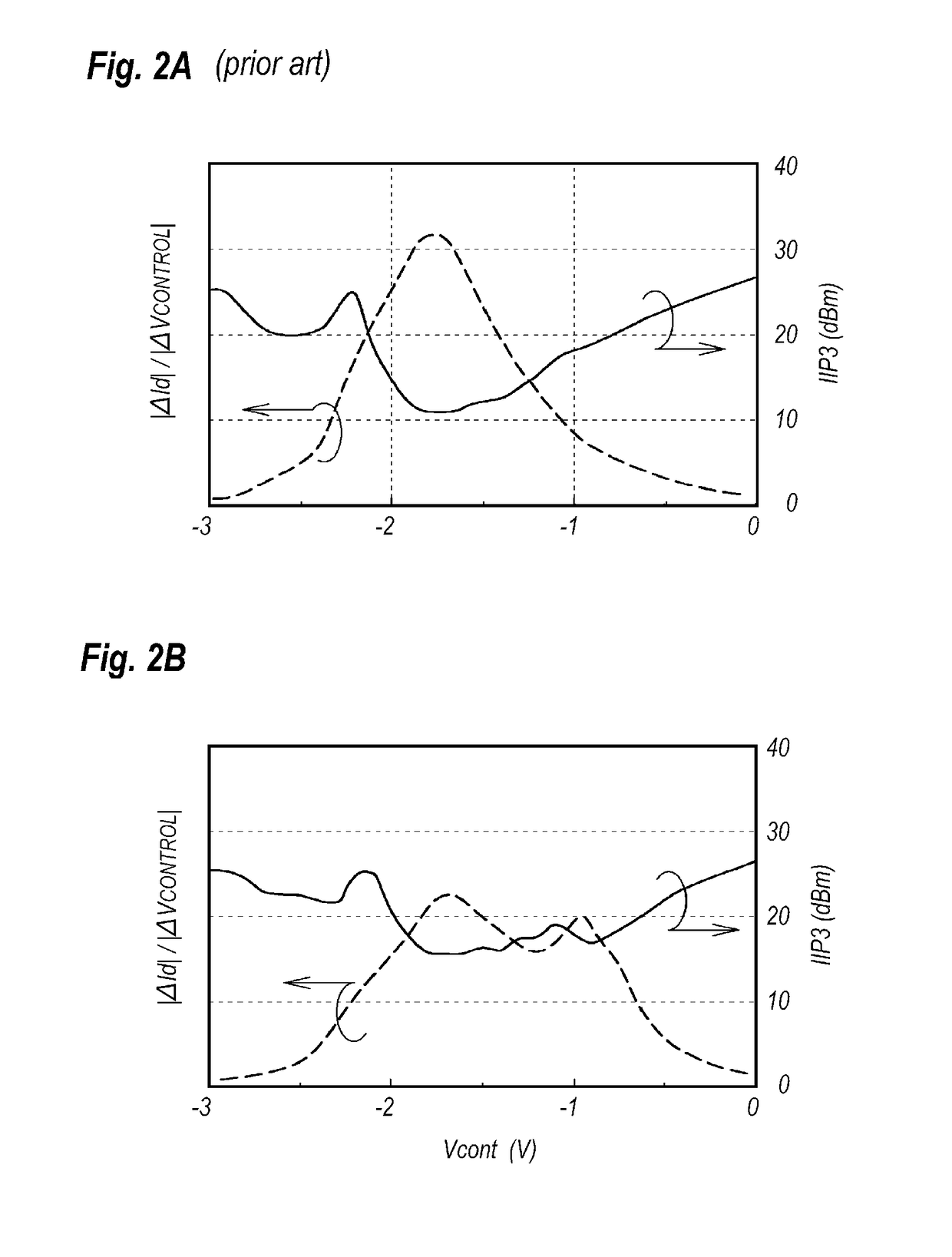Variable attenuator
- Summary
- Abstract
- Description
- Claims
- Application Information
AI Technical Summary
Benefits of technology
Problems solved by technology
Method used
Image
Examples
first embodiment
[0030]Next, a variable attenuator (v-ATT) according to the first embodiment of the present invention will be described. FIG. 1 shows a circuit diagram of the v-ATT 100 according to the first embodiment of the present invention. The v-ATT 100 includes, same with those implemented within the conventional v-ATTs, 200 and 200A, an input terminal Tin, an output Terminal Tout, transmission line L0 provided between the input terminal Tin and the output terminal Tout, three field effect transistors (FETs), 10 to 30, and a bias unit 40. Although the v-ATT 100 directly connects the transmission line L0 with the input terminal Tin and with the output terminal Tout, the transmission line L0 may be indirectly connected with those terminals, Tin and Tout, through capacitors that cut a DC component and low frequency components contained in a signal entering the input terminal Tin and to be attenuated.
[0031]The transmission line L0 includes four transmission line elements, L1 to L4, which interpose...
second embodiment
[0042]FIG. 4 shows a circuit diagram of another v-ATT according to the second embodiment of the present invention. The v-ATT 100A shown in FIG. 4 has a feature that FETs connected between the transmission line L0 and the ground have cascade connections. That is, two FETs, 10 and 12, with the cascade connection are provided between the intermediate node N1 and the ground. Two FETs, 20 and 22, also with the cascade connection are provided between the second intermediate node N2 and the ground. However, the FET 30 in the third stage, namely, the stage provided closest to the output terminal Tout, has the normal connection; that is no additional FET is connected in series with the third FET 30. The cascade connection of the FETs in the first and second stages means that one of the current nodes, the source, of the high side FET is directly connected with another of the current nodes, the drain, of the low side FET.
[0043]The distortion performance measured through the IIP3 and the attenu...
third embodiment
[0050]FIG. 6 shows a functional block diagram of an electronic apparatus according to the third embodiment of the present invention. The electronic apparatus 110 shown in FIG. 6 provides two v-ATTs, 100a and 100b, with a type of the first embodiment and / or the second embodiment, and two couplers, 54 and 56. Capacitors, C1 and C2, interposed between the input terminal T1 and the first coupler 54, and between the second coupler 56 and the output terminal T2, cut a DC component and low frequency components contained in the signal entering the input terminal T1. The coupler 54 divides a signal coming from the input terminal T1 into two portions having a phase difference of 90°, and provides thus divided two portions of the signal to the respective v-ATTs, 100a and 100b. The v-ATTs, 100a and 100b, attenuate the respective portions of the signal according to the control signal Vcont. The other coupler 56 mixes thus attenuated signals into one signal. Because the v-ATTs, 100a and 100b, cau...
PUM
 Login to View More
Login to View More Abstract
Description
Claims
Application Information
 Login to View More
Login to View More - R&D
- Intellectual Property
- Life Sciences
- Materials
- Tech Scout
- Unparalleled Data Quality
- Higher Quality Content
- 60% Fewer Hallucinations
Browse by: Latest US Patents, China's latest patents, Technical Efficacy Thesaurus, Application Domain, Technology Topic, Popular Technical Reports.
© 2025 PatSnap. All rights reserved.Legal|Privacy policy|Modern Slavery Act Transparency Statement|Sitemap|About US| Contact US: help@patsnap.com



